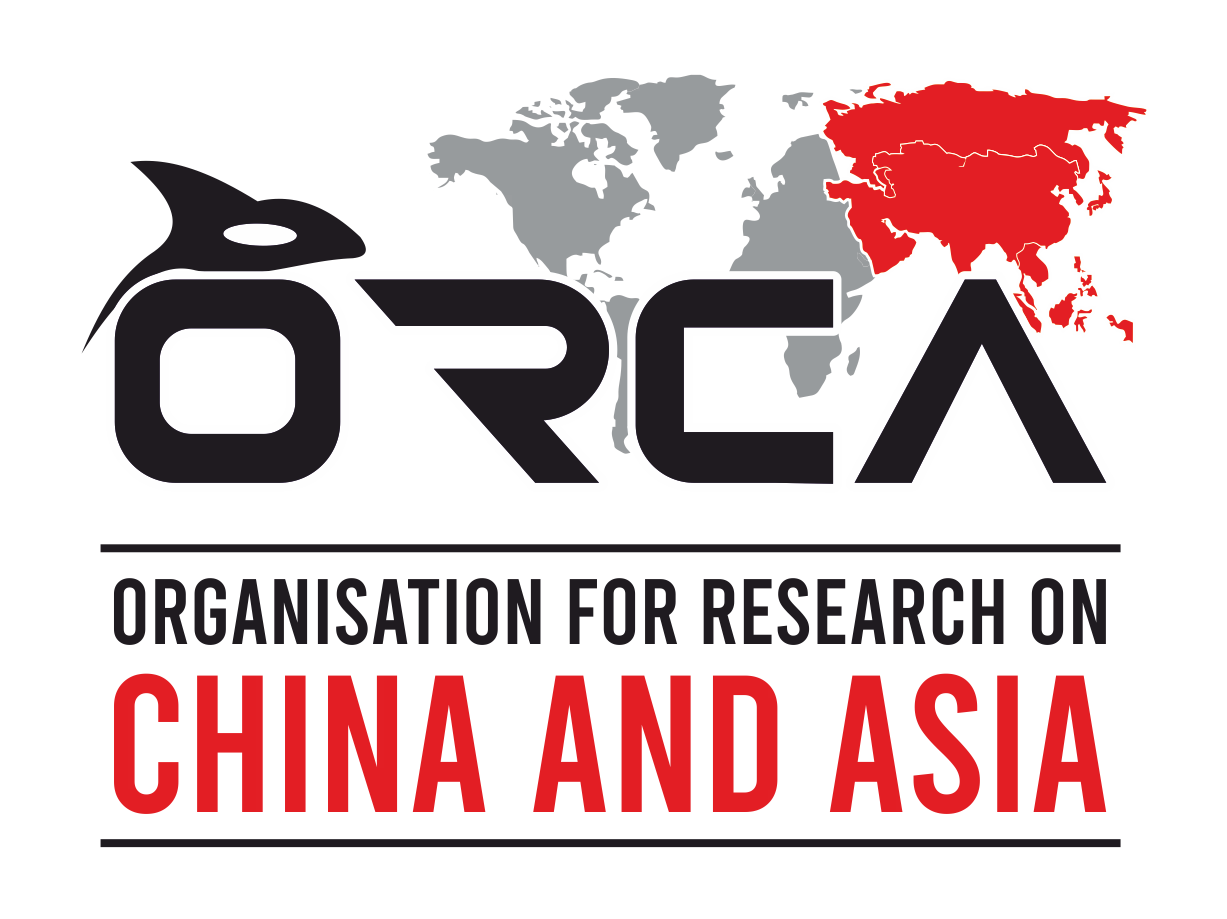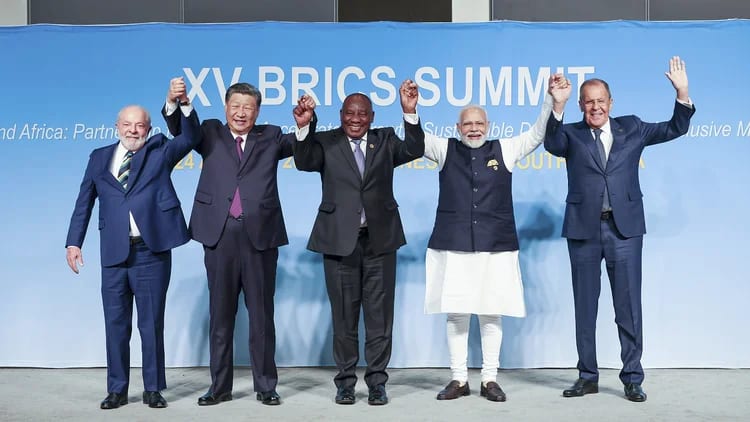As the BRICS coalition grows from five to ten nations, its ambition to champion the Global South is reshaping global geopolitics. Yet, beneath this expansion lies a tug-of-war between China’s bold vision for a new world order and India’s cautious push for consensus and reform. With new members juggling ties to the West and internal rivalries, BRICS risks becoming a fractured giant. Can it balance Beijing’s ambitions with New Delhi’s pragmatism to redefine global governance, or will its diversity derail its potential amidst 2025’s trade wars?
At the 2023 Johannesburg Summit, BRICS invited six nations, Argentina, Egypt, Ethiopia, Iran, Saudi Arabia, and the UAE to join as full members. Argentina declined, and Saudi Arabia remains hesitant, wary of straining U.S. ties. Egypt, Ethiopia, Iran, and the UAE joined in January 2024, followed by Indonesia in January 2025, bringing the bloc to ten. The 2024 Kazan Summit added nine partner countries, including Nigeria and Thailand, to engage without full voting rights. Now, with a larger and more diverse membership, BRICS has become a platform for competing visions of the global order. China and India, in particular, are pushing very different approaches to the group’s role, expansion strategy, relationship with the West, and how decisions should be made. The table below outlines these key differences.
| Aspect | China’s Approach | India’s Approach |
| Vision for BRICS | Frames BRICS as “first [EM-led] (Emerging Markets) multilateral development institution” and a “pioneering initiative for the Global South”. Xi says BRICS should “amplify the voice of the Global South” in reshaping global governance. He urges more global south countries to join to “combine the great strength of the Global South” under a ‘new world order’. This shows Beijing’s aim to institutionalize its leadership of emerging economies. | Sees BRICS as a consensus-driven, pluralistic forum for development. India has repeatedly stressed that expansion be done “through a consensus-based process” so the group is not “hijacked by one or two member countries”. New Delhi emphasizes collective development, reform of existing institutions (e.g. G20/G7) and problem-solving, rather than overtly opposing any one country. |
| Membership Expansion | Actively promotes rapid expansion to include more developing countries. Xi’s speeches explicitly back inviting additional Global South nations into BRICS. In Kazan he even proposed new initiatives (AI alliance, customs portal, etc.) to deepen BRICS integration and called for more members. Expansion aligns with China’s goal of multiplying its influence by pooling partners in its orbit. | Supports expansion only with unanimity. India “fully supported” the 2023 expansion of six new members, but only after insisting on unanimous consent. New Delhi’s calculus is that a gradual, agreed expansion ensures its own allies get a seat and prevents any one country from dominating. India’s diplomacy has pushed for inclusion of like-minded partners (e.g. UAE, Egypt) but under the established consensus rules. |
| Engagement with the West | More confrontational, sees BRICS as a counterweight to Western-led institutions. Chinese leaders link BRICS to UNSC reform, de-dollarization and alternative finance, implicitly challenging US-led order. The goal is to promote Beijing’s “Global Development Initiative” and Global South agenda outside the G7/G20 framework. | India uses BRICS alongside other forums (G20, Quad, I2U2, etc.) and avoids framing BRICS as anti-U.S. An Atlantic Council analysis notes India’s preference “to engage with the G7” on reform rather than “take sides” against Washington. India views BRICS as complementary to, not a replacement for, existing institutions, keeping its strategic options open. |
| Decision-making | Seeks to steer through initiatives like the New Development Bank (NDB) and bilateral outreach, but has no formal veto over BRICS consensus. Beijing’s style is more top-down in practice, pushing for visible project outcomes (NDB loans, BRICS funds). | Emphasizes consensus over hierarchy. BRICS by design is “largely informal” with no permanent secretariat and decisions by unanimity. India leverages this structure to slow any move away from consensus. Even if its agenda moves slower, New Delhi counts on collective input and often dampens any single power from imposing a hard line. As Brazil’s foreign minister stated after a recent meeting, “the expansion has its costs…we have to work more to reach a consensus”. |
China’s Ambitions
China’s vision for BRICS is rooted in its broader Global South strategy and to reshape global governance, thus positioning the bloc as a counterweight to Western-dominated institutions. President Xi Jinping has consistently framed BRICS as a symbol of emerging market leadership. Even in April 2025, he lauded the New Development Bank (NDB) as a cornerstone for green, low-cost infrastructure financing, entering a “second golden decade”. Such statements show Beijing’s intent to use BRICS and its bank to institutionalize Pro-Chinese governance reforms. Xi has openly connected BRICS expansion to UN and financial reforms as he urged that the NDB should amplify the voice of the Global South in international finance reform and safeguard developing countries’ interests. Likewise, in October 2024 he declared China will always keep the Global South in our heart and pledged to support more Global South countries in joining the cause of BRICS.
Apart from this, China is a proponent for expanding BRICS by inviting new members to boost its global influence. To aid this, Chinese state media portray BRICS as a vehicle for an alternative order centered on Beijing’s leadership. However, China’s ambitions face structural and diplomatic limits even within BRICS. Its consensus-driven model which requires unanimity also empowers members like India and Brazil to moderate Beijing’s agenda, as seen in the 2025 Rio ministerial meeting’s failure to issue a joint statement.
China’s Institutional Push
China’s strategic approach to global influence is increasingly driven by its growing use of multilateral institutions that either reflect its interests or operate under its leadership. Key among these are the New Development Bank and BRICS Pay, the Asian Infrastructure Investment Bank. Through these platforms, China is not just participating in global governance but also actively reshaping it. The overarching aim for China here is to deepen economic integration among Global South countries, thus promoting infrastructure and gradually shifting the balance of global financial power away from the West.
The NDB, established by the BRICS countries in 2015, exemplifies this effort. For instance, the bank has financed transportation infrastructure in Ethiopia and contributed to renewable energy development in Egypt, both of which are key areas for the BRI. While officially a multilateral institution, the NDB’s strategic alignment with Chinese development priorities suggests its role as a tool of soft power. Likewise, the AIIB has taken on a significant role in supporting infrastructure connectivity and energy transition. Its $210 million investment in Egypt’s Benban Solar Park and $248 million support for Indonesia’s tourism oriented Mandalika project reinforce BRI objectives. While AIIB projects often involve co-financing with other international bodies to maintain credibility, the governance structure of the bank, which gives China a dominant share of voting power, allows it to shape priorities from within.
A key symbol of China’s long-term ambition to reshape the global financial order is the development of BRICS Pay, a cross-border payment system aimed at reducing dependence on the U.S. dollar and insulating member economies from Western sanctions and financial shocks. China’s de-dollarization effort is part of a broader move to push for reshaping of the global system supported by initiatives like the GDI, GSI, and GCI.
The Limits of Beijing’s Leverage
Yet Beijing’s ambitions bump into hard realities. The enlarged BRICS is far more heterogeneous than the original five. New entrants have disparate priorities and allegiances. For example, at the April 2025 BRICS foreign ministerial meeting in Rio de Janeiro, Egypt and Ethiopia’s opposition to which country should be Africa’s representative on the UN’s highest body prevented the release of a joint statement.
Such divisions highlight the inherent limits of consensus in BRICS. In practice, even when all members agree on issues like trade they may hesitate to explicitly name the United States. In Rio, ministers voiced serious concerns about U.S. tariffs, but China alone pushed for a harsher tone than the others. Overall, there is broad consensus (as one Brazilian official noted) on defeating protectionism, but little incentive to alienate Washington outright. BRICS’ informal structure, lacking a formal charter, permanent secretariat, or voting mechanism beyond unanimity, limits China’s ability to dominate. India and Brazil have consistently moderated BRICS’ direction to maintain its focus on development and global reform. India’s advocacy for a consensus-driven model ensures BRICS remains a cooperative forum rather than a hierarchical bloc led by Beijing.
India’s Balancing Game and The West Factor
India has skillfully navigated the evolving dynamics within BRICS. While publicly supporting the bloc’s expansion, New Delhi made clear that any enlargement must follow a transparent, consensus-driven process. Indian officials continue to frame BRICS as complementary to other global platforms notably the G20, which they describe as the “premier forum” for international economic cooperation. BRICS could either evolve into a platform for constructive global engagement, especially with the G7 if it follows India’s pluralistic and reform oriented approach, or risk turning into a rhetorical arena for anti-U.S. posturing if China’s more confrontational vision dominates. By strengthening ties with the US, Japan, and the EU through initiatives like the Quad and I2U2, New Delhi is clearly positioning itself as a bridge between traditional power centers and emerging coalitions. Simultaneously, India is expanding strategic partnerships in the Global South, particularly with new BRICS entrants like the UAE and Egypt, focusing on trade, connectivity, and infrastructure. This dual-track diplomacy enables India to hedge against China’s growing clout in the bloc while reinforcing its own leadership credentials.
China may be overestimating how far new BRICS members are willing to distance themselves from Washington. In the Gulf, countries like Saudi Arabia and the UAE are exploring strategic diversification, but their deep reliance on U.S. security guarantees and advanced technologies constrains their choices. While both states have shown interest in BRICS, Riyadh has been particularly cautious not wanting to jeopardize sensitive negotiations with the U.S. over nuclear cooperation and tech transfers. For these states, BRICS is less a geopolitical pivot than a strategic hedge, an avenue to enhance their global standing without formally aligning against the West.
The room for maneuver, however, remains narrow. The U.S. has grown more assertive in using its dominance in technology and defense as leverage, warning partners against veering too close to rival coalitions. Egypt, for example, despite its outreach to China, still receives over $1.3 billion annually in U.S. military aid. Its economic and security apparatus remains closely tied to Washington. For many of these states, BRICS membership is about expanding diplomatic options not about severing crucial Western ties.
Despite tensions, BRICS is shaping up to be less a battleground between China and India and more a complex, multipolar dialogue. China will continue to push BRICS institutions as engines of its vision for a “Global South” driven order. But China cannot simply dictate outcomes. The very heterogeneity and consensus rules give India and others room to push back. Meanwhile, several newer members will quietly steer clear of outright anti-American postures. The upshot is that, even after expansion, BRICS is likely to remain an unwieldy, consensus-bound forum, not a monolithic China-led alliance. Its future influence will depend on whether Beijing’s aspirations can harmonize with its partners’ diverse interests (and their still-strong ties to the West), or whether India’s more pluralistic approach proves more durable.
Image Credit: Disclosure/BRICS



Author
Trishala S
Trishala S is a Research Associate at the Organisation for Research on China and Asia (ORCA). She holds a degree in Sociology with a minor in Public Policy from FLAME University. Trishala’s research interests lie at the intersection of socio-political dynamics, family and gender studies, and legal frameworks, with a particular focus on China. Her work examines the effects of aging populations, gender disparities, and rural-urban migration on social welfare, labor policies, and the integration of migrants into urban environments. She is also the coordinator of ORCA's Global Conference on New Sinology (GCNS), which is India's premier dialogue driven China conference. She can be reached at [email protected]